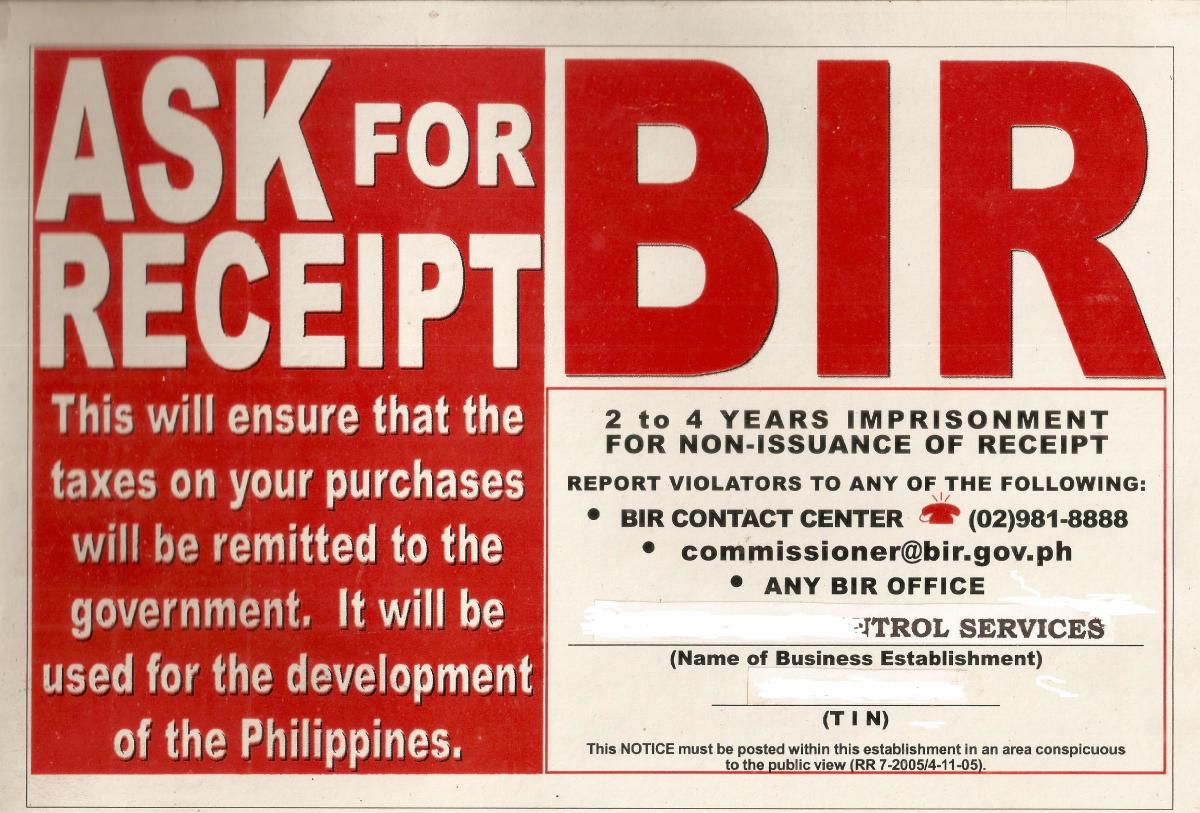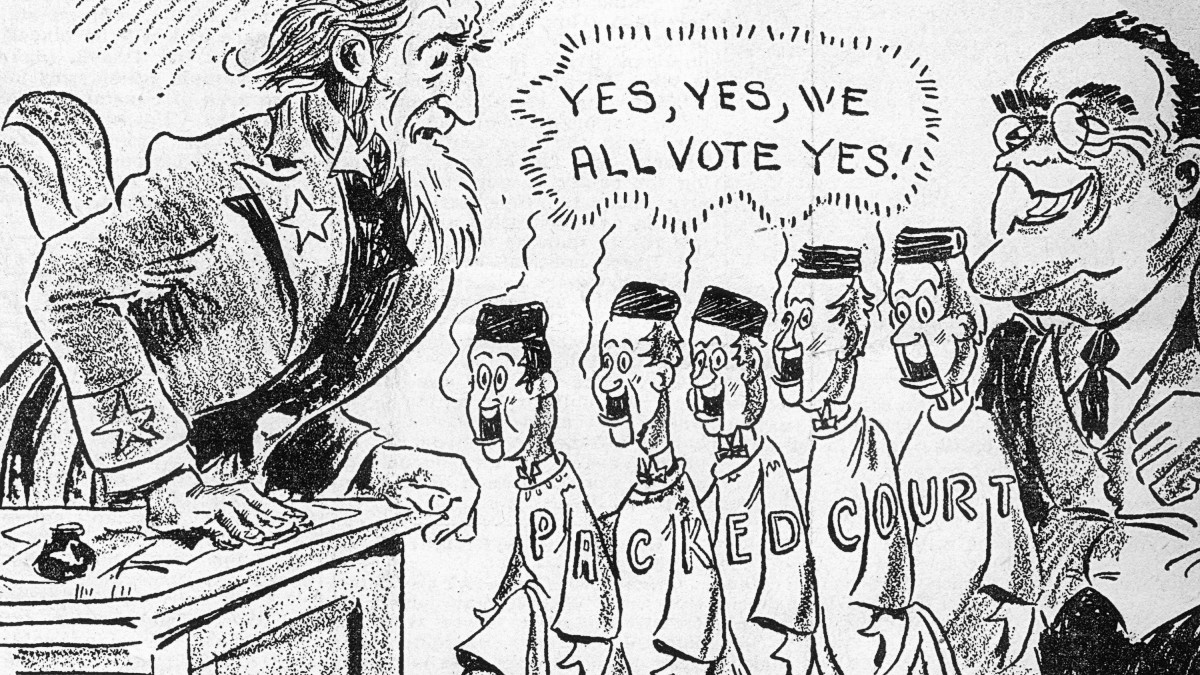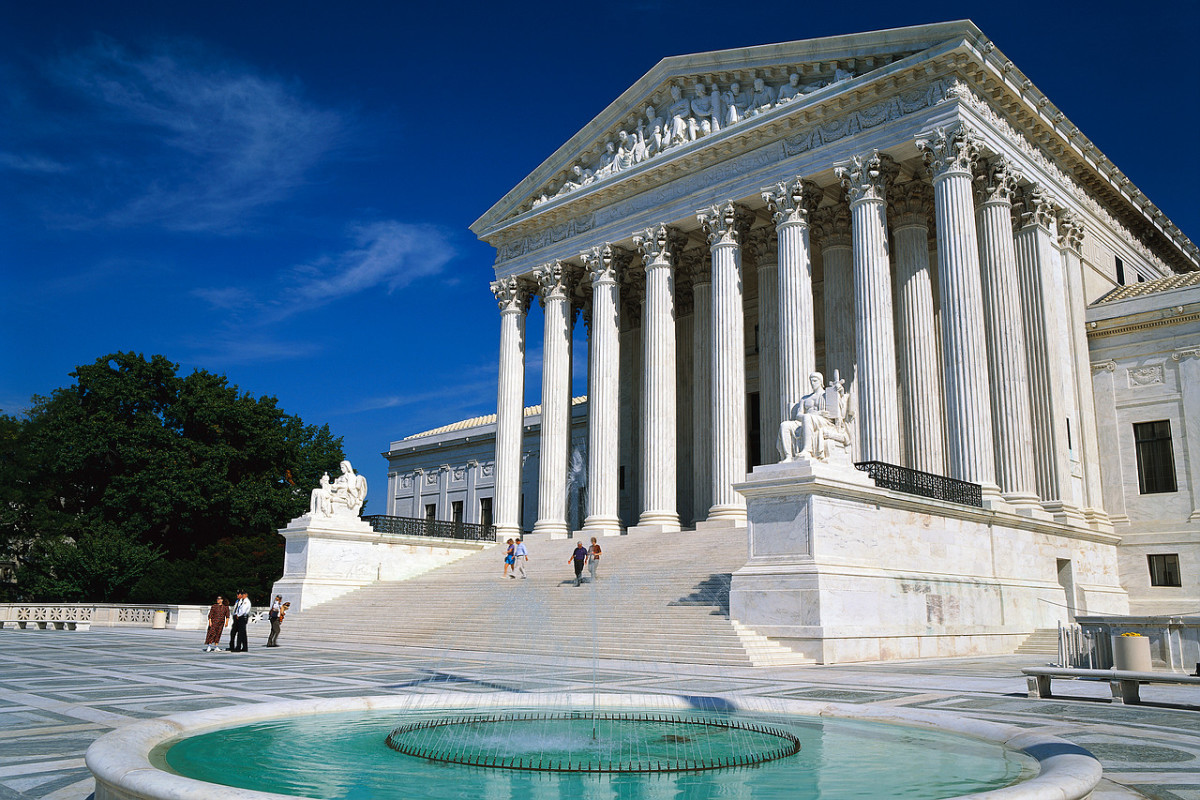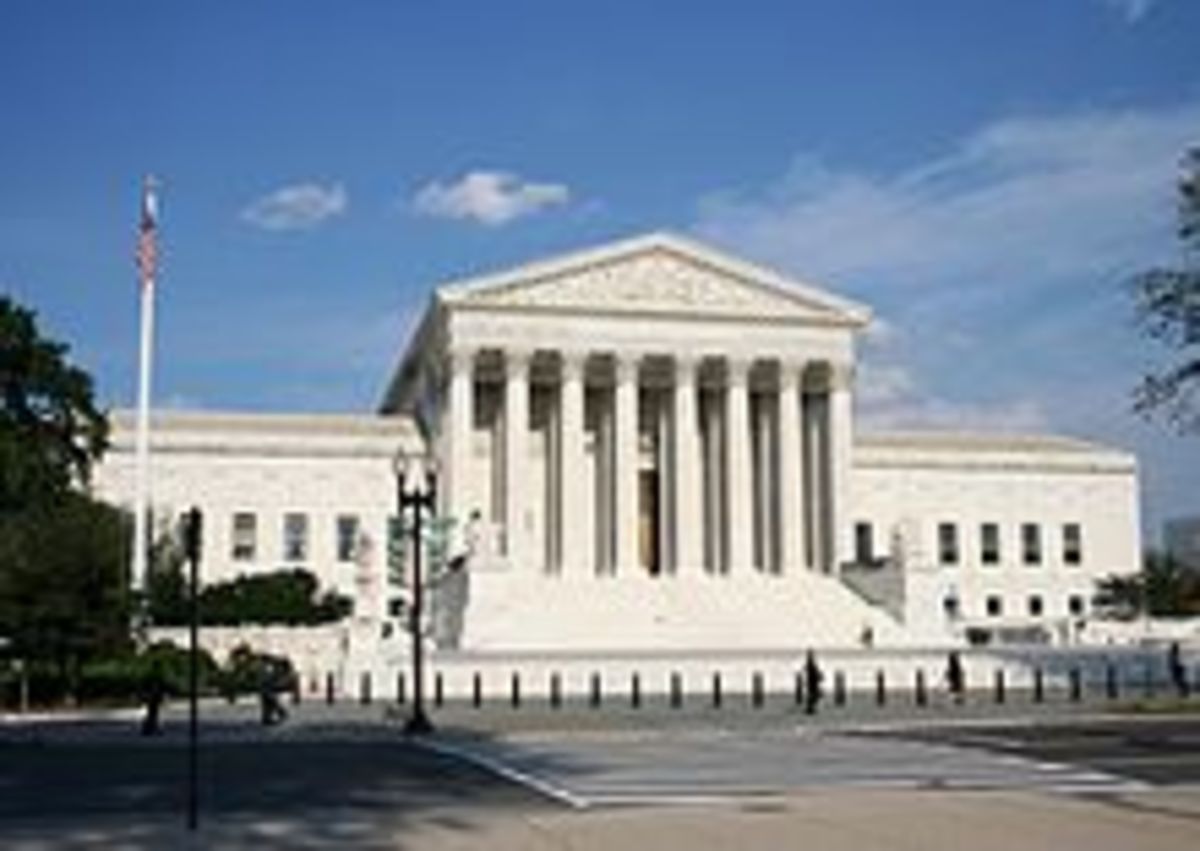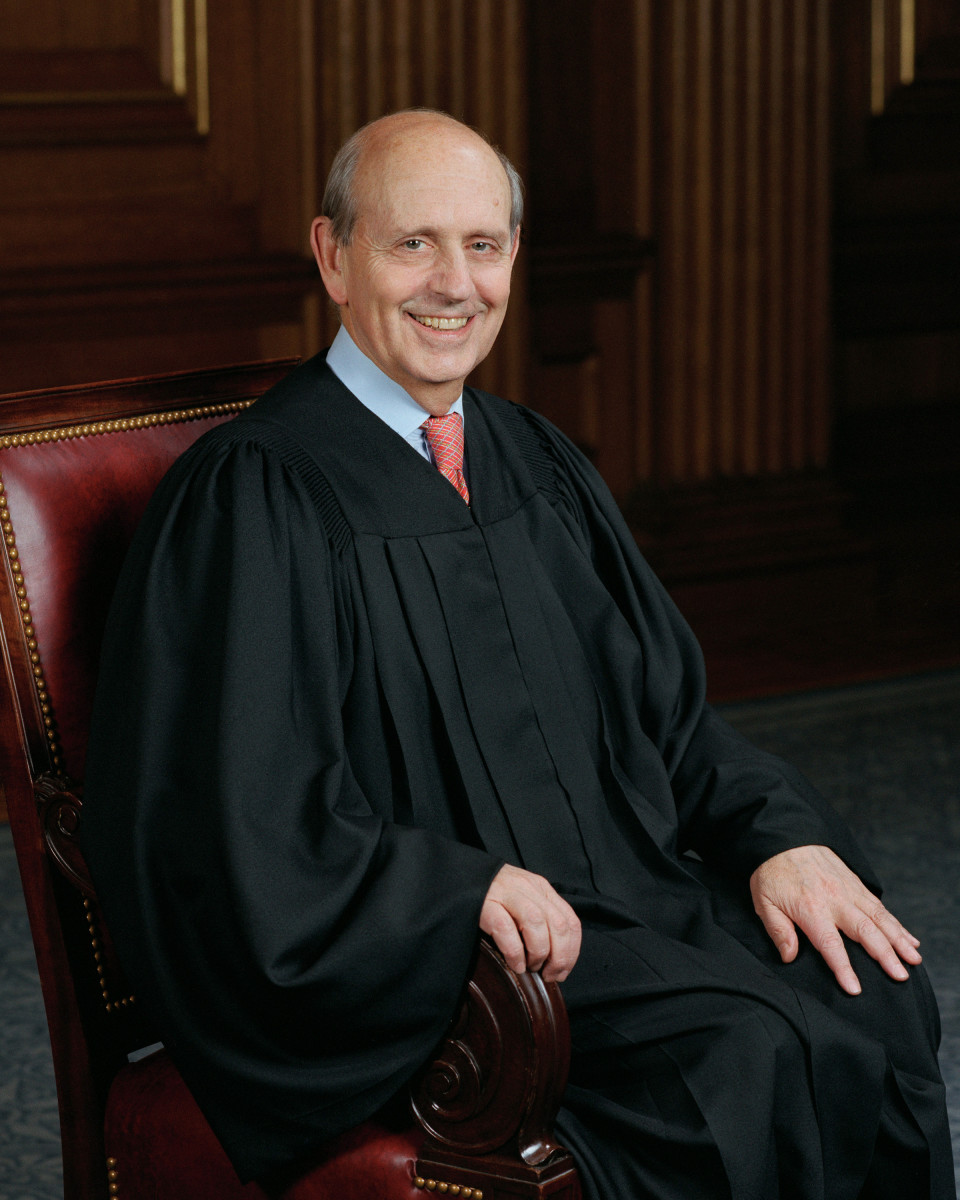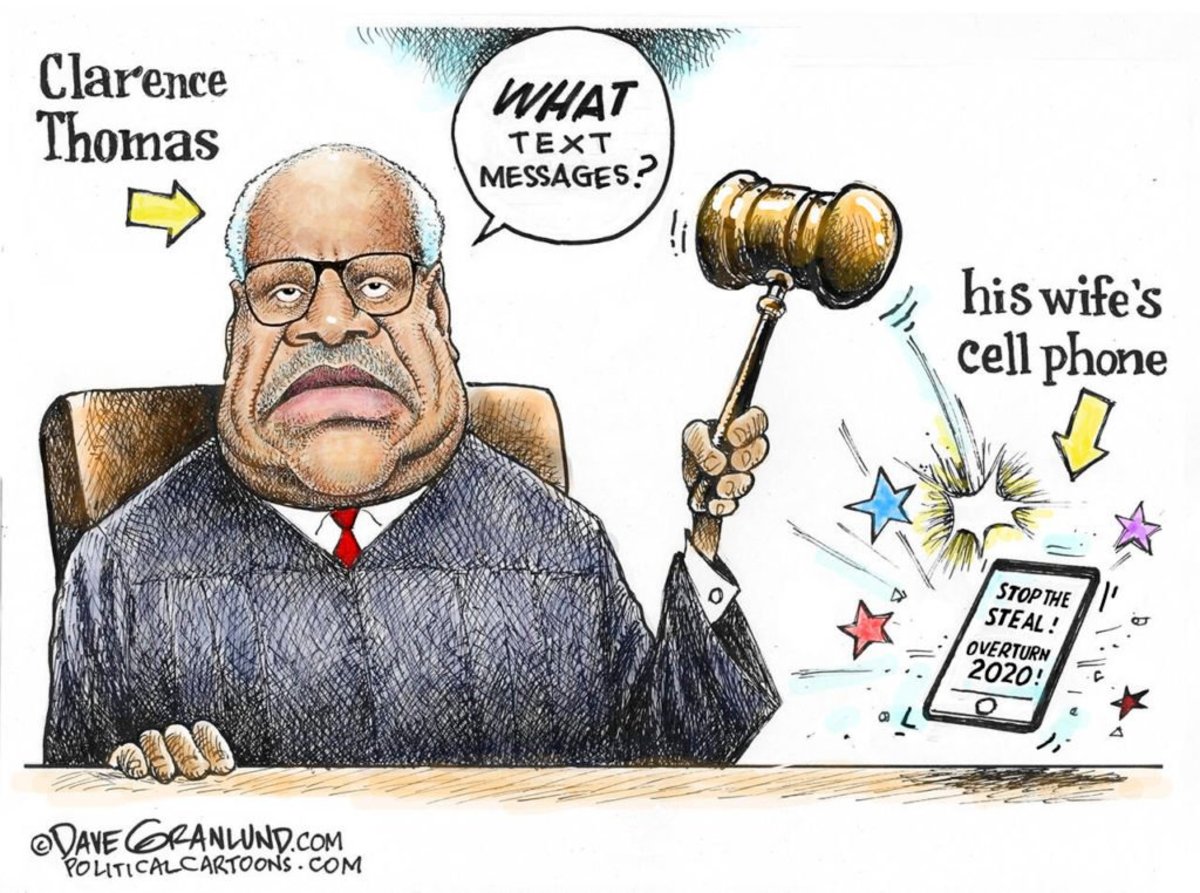The Supreme Court

The untimely death of Supreme Court Justice Antonin Scalia in February has brought the Supreme Court into the center spotlight of both the nation and the political world. With a November Presidential election looming, there has been a spirited debate from both sides of the political spectrum on what course of action would be best for America. The court prior to Scalia’s death had been balanced from an ideologically perspective. Scalia was almost always on the side of the majority rulings (except in 2014) and had been moving leftward in the last decade. With his death, the court is left without a median justice, or one who tips the balance in closely contested cases. Now it looks like both Stephen Breyer and Anthony Kennedy will both be seen as median Justices, and it’s very likely that many cases during the current term will end in 4-4 ties; when that happens, the decision of the lower court is affirmed without creating a precedent.
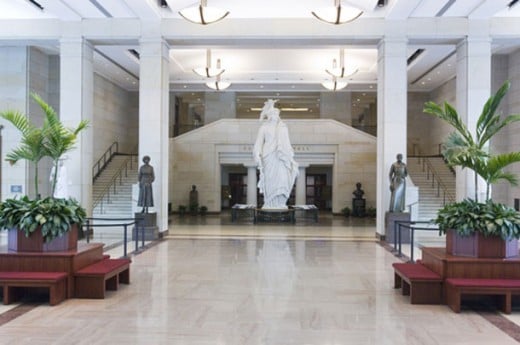
Republican Senate
With the Senate being controlled by a Republican majority it looks to be a lengthy period before a new justice is confirmed. In fact Mitch McConnell, the Senate Majority leader has refused to even consider any appointment President Obama might choose to put forth. The concern by Republicans is that any Obama appointment would be the most consequential ideological shift on the court since 1991, creating a liberal majority that would almost certainly reshape American law and American life. Every occupant of the White House, when given the opportunity, tries to shift the balance of the court to their Party’s favor and President Obama has already had the opportunity to add two Justices during his tenure. This juncture is American politics is crucial as both Parties are pushing ideological issues. The last Supreme Court nomination with stakes this high was in 1991, when Justice Thurgood Marshall retired. Justice Marshall was considered by many to be the most liberal justice in modern history. His replacement, Justice Clarence Thomas, is considered the most conservative by those same measures.
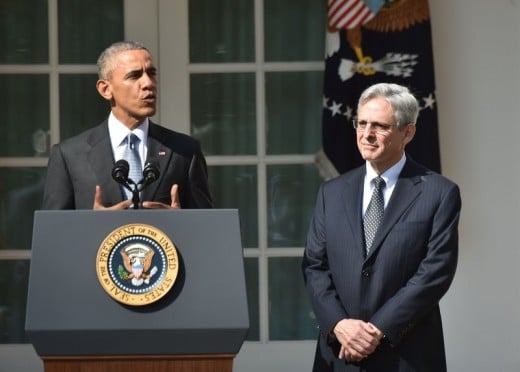
Judge Merrick Garland
President Obama has already nominated Judge Merrick Garland, currently the chief judge for the U.S. Court of Appeals for the District of Columbia Circuit. He was appointed by former President Bill Clinton, is a graduate of Harvard and Harvard Law School, and as a Justice Department lawyer he supervised the investigations in the Unabomber case as well as the Oklahoma City bombing. He is 63 years old with a solid tenure as a Judge however his personal politics are being hotly debated. His track record of siding with regulatory agencies such as the EPA has many concerned as well as his support for Unions, both Democrat strongholds. President Obama describes him as a moderate but his past history of voting to undo a D.C. Circuit court decision striking down one of the most restrictive gun laws in the nation is perceived as a threat to Second Amendment rights by republicans. His entire body of judicial work must certainly be considered by anyone who wishes to thoroughly vet him, but aside from his work, he is a Democrat and as a Democrat will likely follow party doctrine.
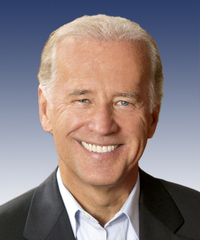
The Biden Rule
The Republican Senate has relied heavily on what has been termed as the “Biden Rule” for rationalizing the waiting game strategy. While serving as a Senator, Vice President Joseph Biden argued that then President George Bush should defer filling a Supreme Court vacancy to the next President. Biden also said it was essential that the Senate refuse to confirm anyone Bush appointed. In an infamous speech on the Senate floor in June 1992, Joe Biden stated that there should be a different standard for a Supreme Court vacancy that would occur in the full throes of an election year and that the president should follow the example of a majority of his predecessors and delay naming a replacement. Biden was quoted as saying, “Some will criticize such a decision and say that it was nothing more than an attempt to save a seat on the court in hopes that a Democrat will be permitted to fill it, but that would not be our intention. It would be our pragmatic conclusion that once the political season is underway, and it is, action on a Supreme Court nomination must be put off until after the election campaign is over.” Vice President Biden has attempted to walk back that speech saying his words are being mischaracterized, yet he’s had little political traction with that approach.
Joe Biden - No Supreme Court Pick Until After Election (1992)
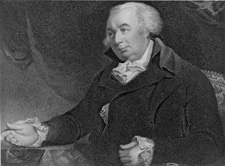
Procedural Rules
The Democrats are voicing a strong opinion alluding to the fact that there is no actual legal precedent to delay a nomination, and they are correct on that point. However the Republican Senate currently holds the high ground for the final decision, or at least it would seem that way. The Constitution requires the President to submit nominations to the Senate for its advice and consent. Yet, arguments are already being debated that an outright refusal to allow a hearing is similar to dereliction of duty. The argument is justified by saying the decision by the Senate to not act is in fact a waiver of its right to provide advice and consent. Republicans argue that this premise is wrong for multiple reasons. Advice and consent is a prerequisite for appointment and not Constitutional duty of the Senate. In fact, there is nothing in the Constitution requiring the Senate to act on nominations in any way. It does seem like an ineffective approach since if push came to shove, the Senate could simply vote Judge Merrick down or filibuster to keep it from ever coming to a vote. Many political scholars can recall when then Senator Barack Obama advocated taking such an action when Samuel Alito was up for confirmation. The Senate has, historically, rejected numerous judicial nominations by simply sitting on them indefinitely.
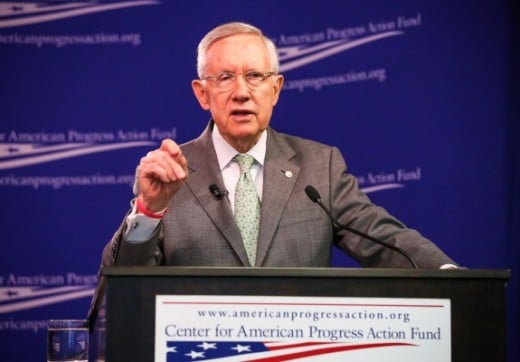
Deadlocked
At the moment, things appear to be at a deadlock and despite the fact that President Obama has stated he would not do it, some Democrats are suggesting a recess appointment. The President by law may make a recess appointment of a Senior Federal Official while the Senate is in recess. Since the Constitution requires most senior federal officers to be confirmed by the Senate, any recess appointment must be approved before the next session of Congress. The Senate can certainly block the President from a recess appointment simply by not recessing. If the Senate does not adjourn for a period longer than three days, not recess appointments can be made. Former Senate Majority leader Harry Reid went so far as to keep the Senate from adjourning for two entire years to systematically prevent then President Bush from making any recess appointments at any level. There are many other examples of this happening in American history and the current Senate is simply following established Senate and Constitutional protocols and rules. As it stands, the Senate has no Constitutional duty to follow a timeline on granting a hearing and the President has no power to force their hand or bypass the confirmation process without violating the law.
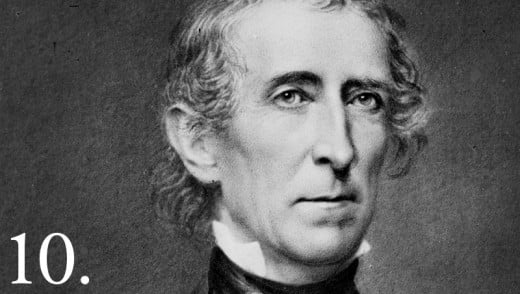
Lengthy Vacancies in History
If thing continue, then the vacancy in the court will be lengthy; almost certain to past at least a year. That would be the longest vacancy in fifty years, but by no means even close to the longest in history. Up until the middle of the 20th Century, it was common for the court to have vacant seats. Since the 1970’s the average time to confirm a new Justice was about 55 days. It’s been a common practice for departing justices to work with their respective parties to make their official retirement contingent on the confirmation of a successor, making the confirmation process much shorter. Prior to that, the longest vacancy was in in the mid 1840’s and lasted for 841 days, when the Senate simply declined to act on any of the nominations brought before them by President John Tyler. This lengthy period certainly serves to demonstrate that the Senate is justified in its current course of action. In the 1860’s a seat was open for 781 days. There were three vacancies lasting more than 500 days, two lasting over 400 days, and three to date of over 300 days. Supporting evidence can be found at the Pew Research Center as well as additional details of each vacancy.
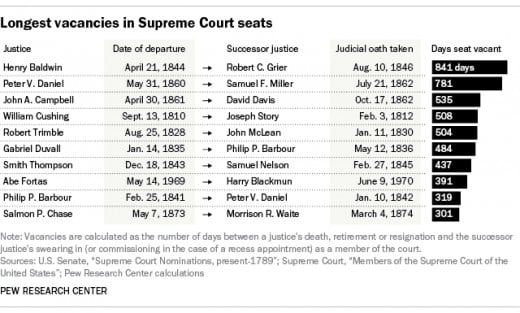
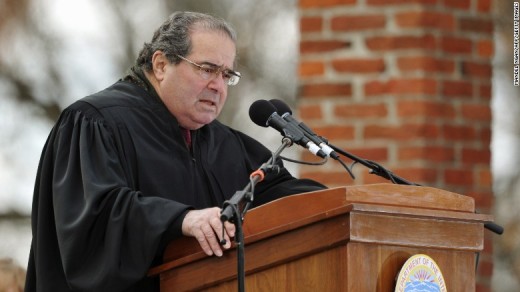
The Court, One Justice Short
If the two sides decide to stand their ground throughout the remainder of President Obama’s term in office the court will continue with their summer docket with only 8 members. Estimates are that over 80 cases will be reviewed before the court is once again at full staff. One of this term’s biggest cases was argued on March 2, when the justices considered whether Texas’ strict regulation of abortion clinics impinges on a woman’s constitutional right to an abortion. If Judge Scalia was alive he most certainly would have been a sure vote to sustain the regulations. Any split decisions would revert to the decision made at the prior court of appeals. History does show us that when the court was in a period of prolonged vacancy that business went fairly smoothly and there were very few split decisions. Scalia’s death does present an immediate challenge to the court because he had participated in all the cases argued up until his death. The Justices collectively made choices about which issues to hear and which to forgo based on the assumption that Scalia would be sitting with them at the time of decision.
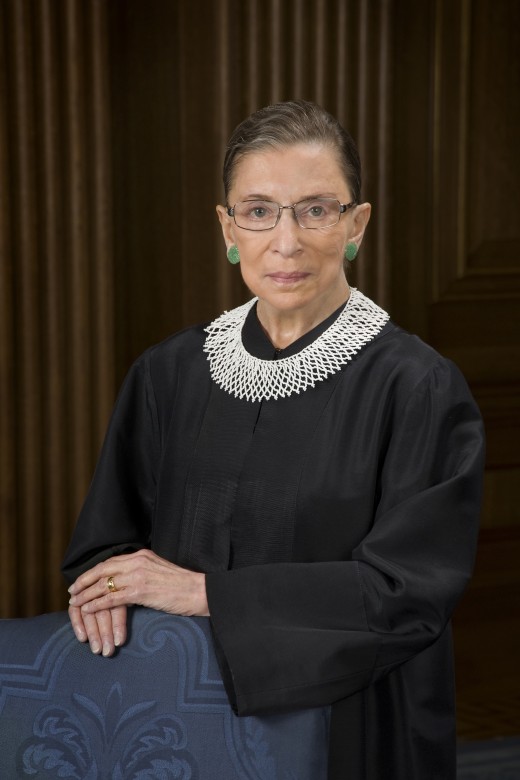
The Court Is Going To Change
Even if Justice Scalia isn’t replaced during this President’s term, the ramifications for an unbalanced court remain the same. If Bernie Sanders or Hillary Clinton wins the upcoming election then the court will shift left. If a Republican wins, it will shift right. And with several other members of the court aged, the shifts could go very polarized in one direction or the other. Ruth Bader Ginsburg is 83 years old, Anthony Kennedy will be 80 in July, and Stephen Breyer is 77. With two left leaning Justices and one right leaning Justice potentially retiring in the next Presidential term, the makeup of the court could be anchored far right or far left for a decade or more. A far left court could limit second amendment rights; give more authority to the EPA and other agencies who are strong supporters of global warming. The Constitution would be considered a “dead document” and the progressive push on reproductive rights, race relations; organized labor, voting rights, open borders, globalization, and multiple other platforms would be advanced with zeal. The court would become a tool for social change that couldn’t be defeated. A far right court would be expected to apply Constitutional law to the letter, focus on judicial restraint rather than dominance, insure gun rights are protected, reduce government regulation, abolish Obamacare, perhaps enforce traditional marriage and define many of the grey areas that are argued about today. Either outcome will be a dramatic and long-standing change for all of America.
The Supreme Court: The Personalities and Rivalries That Defined America
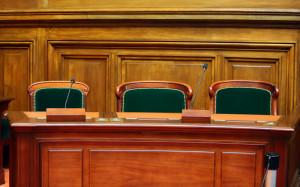
What a Stacked Court Could Mean For the Future
A stacked Supreme Court would become more powerful than the office of the President as it could decide on which litigation to preside over and make rulings which could in effect override established law. Since many of the issues we face as a nation are not represented in the Constitution, it’s often up to the court system to decide the final outcome. What constitutes a right? What constitutes a citizen? Who can vote? How much money can the Government print? What trade agreements are legally binding? Can Global Warming “deniers” be prosecuted? Is it legal for the government to take over major parts of the economy such as what happened with Obamacare? These are just some of the “what if” questions and rulings that a future court might see and if it is heavy to one doctrine or the other the results will be lasting and as close to permanent as you can get. So as the primary season battles continue to play out and we eventually get to Election Day, it will be the voters who decide ultimately on how the court will evolve. Yet, once the court has evolved, will anyone be able to control it?
Who was the best Supreme Court Justice in American History?
Summary
What I've presented is a collection of possible scenario's based on today's facts. What will eventually happen is anyone's guess, but if things play out even close to how I've demonstrated that they could, all of our lives will be impacted to a high degree. Take pause before claiming victory or defeat as the outcome might seem great today but turn into a nightmare tomorrow. I'm interested in hearing your thoughts on the subject.....fight nice as my father used to say.


